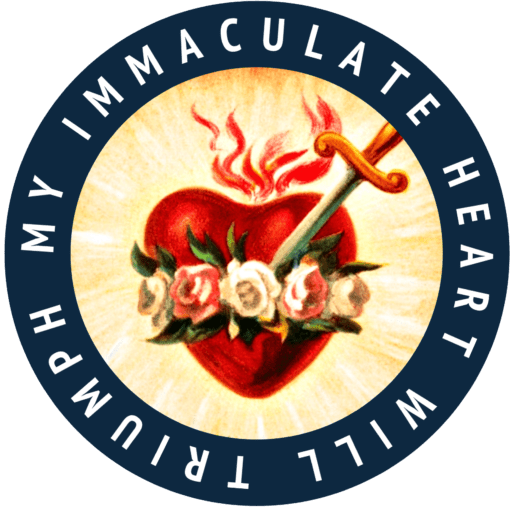
Category: Devotions
-

Chaplet, Novena, Prayer to Our Lady of Mercy
Read More: Chaplet, Novena, Prayer to Our Lady of MercyChaplet to Our Lady of Mercy (consists of three decades) In the beginning: Hail, holy Queen, Mother of Mercy; our life, our sweetness and our hope! To you do we cry, poor banished children of Eve. To you do we send our sighs, mourning and weeping in this valley of tears. Turn, then, most gracious…
-

A Visit from St. Nicholas | Twas the night before Christmas
Read More: A Visit from St. Nicholas | Twas the night before Christmas‘Twas the night before Christmas, when all through the houseNot a creature was stirring, not even a mouse;The stockings were hung by the chimney with care,In hopes that St. Nicholas soon would be there; The children were nestled all snug in their beds;While visions of sugar-plums danced in their heads;And mamma in her ‘kerchief, and…
-

What is LAS POSADAS? How to Celebrate?
Read More: What is LAS POSADAS? How to Celebrate?LAS POSADAS is an Advent devotion common among Mexican and Latino Christians. Although customs vary, generally on each of the nine evenings before Christmas Eve members of local families gather together, sing traditional villancicos (Spanish Christmas hymns), and are lead by two members dressed as Mary and Joseph to designated homes (“inns”) where they seek shelter as the…
-

15 Days Until Christmas! PRINTABLE Short Advent Daily Meditations for Your Journey (10 Dec 2024 – 25 Dec 2024)
Read More: 15 Days Until Christmas! PRINTABLE Short Advent Daily Meditations for Your Journey (10 Dec 2024 – 25 Dec 2024)Powered By EmbedPress The Advent season is a time of preparation, reflection, and anticipation for the coming of Jesus Christ. Below are daily meditations, incorporating the Saint of the Day, Bible readings, reflections, saintly quotes, and prayers. 10 December 2024: Trust in God’s Plan Saint of the Day: St. John Roberts, MartyrBible Reading: Isaiah 40:1-11“Comfort,…
-

Catholic Exorcism Prayers for the Laity: Official Prayers for Protection and Deliverance!
Read More: Catholic Exorcism Prayers for the Laity: Official Prayers for Protection and Deliverance!Below Catholic exorcism prayers for the laity are approved by the Catholic Church, with references to official Church teachings and documents. These prayers are meant for personal protection, deliverance, and spiritual healing. Catholic Exorcism Prayers for the Laity: Official Prayers for Protection and Deliverance The Catholic Church offers a rich spiritual tradition of prayer for…
-

St. Andrew Christmas Novena | Prepare Your Heart!
Read More: St. Andrew Christmas Novena | Prepare Your Heart!The feast of St. Andrew has always been closely associated with the beginning of Advent as it usually falls shortly after the First Sunday of Advent. In light of that fact, for at least the past century a prayer was developed as a daily preparation for Christmas and took November 30 as its starting point. It…
-

Free Printable HandBook |
Read More: Free Printable HandBook |Saint Louis-Marie de Montfort’s 33 DaysTotal Consecration to Jesus Through Mary Powered By EmbedPress
-

5 Steps To Prepare Yourself For a Holy Advent Season
Read More: 5 Steps To Prepare Yourself For a Holy Advent Season5 Steps to Prepare Yourself for a Holy Advent The Season of Waiting, Hope, and Preparation As we approach the holy season of Advent, the Church invites us into a time of waiting, reflection, and spiritual preparation. Advent is not simply the countdown to Christmas, but a sacred journey of prayer and purification, where we…
-

Watch “Miracle Hour – A method of prayer that will change your life” by Linda Schubert
Read More: Watch “Miracle Hour – A method of prayer that will change your life” by Linda Schuberthttps://youtu.be/kscXVKAJn9c?si=jiWW93ADDdyiG2bS Download the prayer journal below! Powered By EmbedPress
-

Preparing Your Heart for the Feast of Christ the King (Including Litany to Christ the King)
Read More: Preparing Your Heart for the Feast of Christ the King (Including Litany to Christ the King)Preparing Your Heart for the Feast of Christ the King The Feast of Christ the King, celebrated on the last Sunday of the liturgical year, is a glorious reminder of the sovereignty of Jesus Christ over all creation. Instituted by Pope Pius XI in 1925 through his encyclical Quas Primas, this solemnity calls us to…
Search
Popular Posts
-
🙏 A New Chapter Begins: Supporting Pope Leo XIV with Prayer and Hope | W/ Daniel O’Connor
“Give the new pope a break and support him with your prayers.”–…
-
Possible Candidates for The Next Pope!
Some Candidates for the New Papacy Today we will share with you…
Categories
Archives
Tags
#Miracles (102) 2023 (4) 2024 (4) approved miracles (2) catholic (141) catholic blog (375) catholic meditations (7) catholic miracles (371) catholic motivation (2) catholic news (371) catholic prayers (4) CatholicSeers (359) catholic vlog (375) catholic websites (6) Eucharistic miracle (2) fr jim blount (3) GisellaCardia (11) hamas (3) imitation of christ (2) Israel (4) israel live (5) Israel news (9) jesus (3) jesus christ (4) Latest messages (11) lent 2023 (10) lent 2024 (4) lent homily (2) lent retreat (4) lent retreat 2023 (3) Lourdes (2) messages from god (6) MessagesFromHeaven (364) miracles of catholic church (2) mother and refuge (2) ourlady (325) OurLadyApparitions (22) our lady of lourdes (2) Pope (2) POPE francis (3) pope francis news (2) prayers (3) real miracles (356) sacred heart of jesus (2) The Miracles of Lourdes (2)




